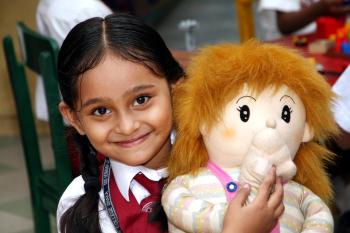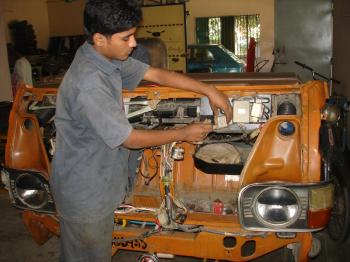The capital city is unable to cope with the massive increase in population

Dhaka is home to over 16 million people. It is not only one of the largest cities of the world, and one of the most densely populated, but according to some reports it is also considered one of the world's fastest growing cities with about 400,000 people moving there every year. They come from rural areas, in search of work and a better life for their loved ones. However, the increase in the population has posed challenges to the infrastructure of the city.
The majority of the people who have migrated have ended up living in slums on the fringes of the city. They have no access to electricity, safe drinking water or sewage systems, let alone access to health care or education for their children. Most live precariously off the informal economy; they sell goods on the streets, drive rickshaws, sort rubbish or beg on the streets. Others manage to find work as domestic servants or in the textile industry.
Due to the economic and social pressures that families are under, many children are forced to go out to work and contribute to the household income. Like their parents they are involved in precarious activities on the streets of the city. In addition, thousands of children are working as domestic servants for the emerging middle classes of the capital. Education becomes a luxury, and they often cannot afford to go to school. Many of these children have already lost parental care due to these complex circumstances, and countless more are at risk.
Children in need of a loving home and hope for the future
What we do in Dhaka

SOS Children's Village Dhaka is situated on a main road leading out of the city to the north. We work closely with the local population, adapting our activities to their needs. In order to support families in the neighbourhood, we offer day-care facilities for young children whose mothers have to go to work, as well as primary and secondary education, vocational training programmes and loving homes to children and young people who have lost parental care. After the devastating storms and floods of 1991, a cyclone shelter was built in the city, which is also used as a meeting place for the local population.
Children who have lost parental care can find a loving home with one of the 15 SOS families, who can care for up to 150 children. SOS mothers have received training to provide a stable and loving environment for the children in their care. The SOS Hermann Gmeiner School provides primary and secondary education for up to 1120 pupils from the SOS Children's Village and the surrounding area. There was a great need for this school, since educational facilities are very limited in Bangladesh. The school has acquired an excellent reputation as one of the country's best educational establishments.
As children grow older they can move to the SOS Youth Programme while they attend further education or training. With the help of qualified staff, the young adults learn to shoulder responsibilities and make their own decisions. Some of these young people attend the SOS Vocational Training Centre where they are trained in electrical and mechanical engineering or as car mechanics or joiners.